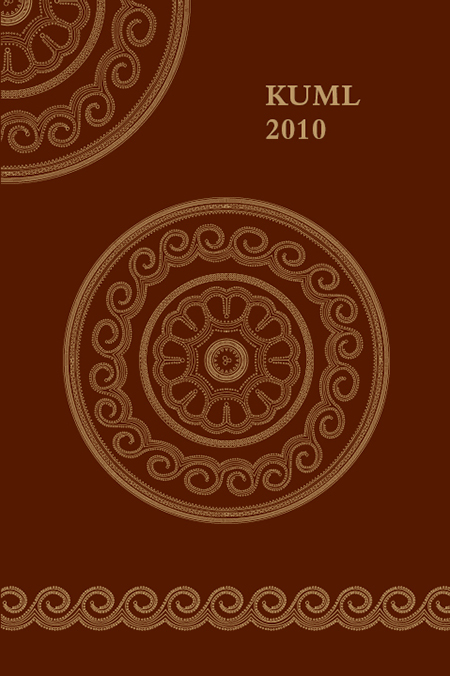Danmarks oldtid – i historisk perspektiv
DOI:
https://doi.org/10.7146/kuml.v59i59.24537Keywords:
Danmarks oldtid, historisk perspektivAbstract
The prehistory of Denmark – an historical perspective
In the introduction to “Danmarks Oldtid” (The Prehistory of Denmark), Jørgen Jensen aligns his work in continuation of a tradition comprising three preceding publications: Jens Jacob Asmussen Worsaae’s “Danmarks Oldtid – oplyst ved Oldsager og Gravhöie” from 1843, Sophus Otto Müller’s “Vor Oldtid. Danmarks forhistoriske Archæologi – almenfattelig fremstillet” from 1897 and Johannes Brøndsted’s “Danmarks Oldtid” from 1938-40. Jørgen Jensen’s “Danmarks Oldtid” was published as one volume per year between 2001 and 2004. All the above works were written by a centrally-placed archaeologist, based at the museum in Denmark where it is decided which finds should be elevated as expressions of national culture (contrary to regional) and, thereby, what should be included in a shaping of the Danish national identity. These four publications are all popular accounts with a focus on the national prehistory, presented as the being time between the first appearance of humans within the country’s borders and the introduction of Christianity. And all contribute in ways characteristic of their respective periods to an integration of this prehistory into the Danish national identity.
The first works were published when romanticism’s particularistic view of the world, with a focus on people, culture, nation, history and spirit, was predominant in those circles within which the national identity was formulated. However, with time, modernity’s universal world view gradually imposed itself, a world perception which in many areas demystified romanticism and focussed instead on society, system and development.
In this article, it is demonstrated how the above-mentioned works, within three different areas – prehistory’s morale, the origin of the Danish people and/or culture and history’s determinants, in the spirit of their respective times, linked prehistory to the contemporary especially romantically-inspired creation of a Danish identity. There is a focus on, for example, the ways in which the Danish people or the Danish culture are/is rendered unique; something central to a romantic perception in contrast to a modernistic one. How events are placed in the past on which we can look back with pride – otherwise prehistory would of course not be of much worth as an element of identity. How a shift occurs between the randomness of history and necessity of development, and much more which unfolds in the area between romanticism and modernity.
With reference to the fact that these four works were all more or less directly linked to the production of new prehistoric exhibitions at the National Museum, this article concludes, on the occasion of Moesgård Museum’s new exhibition, with an attempt to reverse the relationship between the spirit of the times and the communication of information which formed the foundation for its first part. Some observations are made concerning the ways in which it is possible, in a museum context, to relate to a post-modern or post-industrial scenario. Where the project of development, so central to the communication of the past in books and by museums, is abolished as imperialistic and how, consequently, the point of departure has to be that any communication must challenge the post-modern, reflexive individual in the construction of its own narratives.
Ole Høiris
Afdeling for Antropologi og Etnografi
Aarhus Universitet
Downloads
Published
How to Cite
Issue
Section
License
Fra og med årgang 2022 er artikler udgivet i Kuml med en licens fra Creative Commons (CC BY-NC-SA 4.0).
Alle tidligere årgange af tidsskriftet er ikke udgivet med en licens fra Creative Commons.


